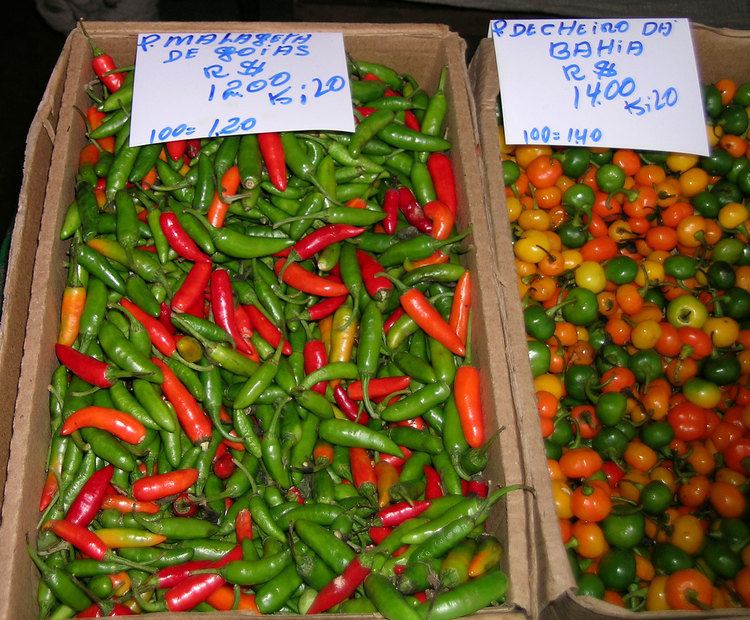Heat Very hot | Scoville scale 60,000–100,000 SHU | |
 | ||
Scientific name Capsicum frutescens 'Malagueta' Similar Water, Pepper, Sugar, Habanero, Tabasco pepper | ||
Germinating trinidad scorpion and malagueta pepper seeds
Malagueta pepper ([malaˈgeta]), a kind of Capsicum frutescens, is a type of chili widely used in Brazil, Portugal, and Mozambique but also used throughout the Caribbean, specially its Spanish speaking countries. It is heavily used in the Bahia state of Brazil. It apparently gets its name from the unrelated melegueta pepper from West Africa (Zingiberaceae).
Contents
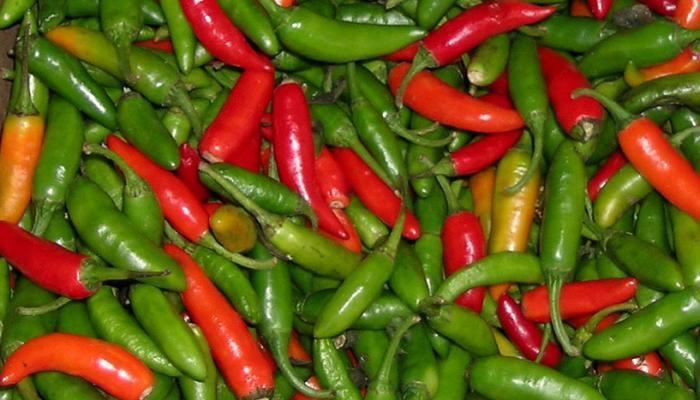
It is a small, tapered, green pepper that turns red as it matures at about 5 cm (2 in) in length. It has a range of 60,000 to 100,000 Scoville units. Two sizes are seen in markets, which sometimes have different names: the smaller ones are called malaguetinha in Brazil and piri piri in Portugal and Mozambique, and the larger ones are called malagueta in Brazil and Portugal. They are not different varieties, just peppers of different maturities from the same plant.
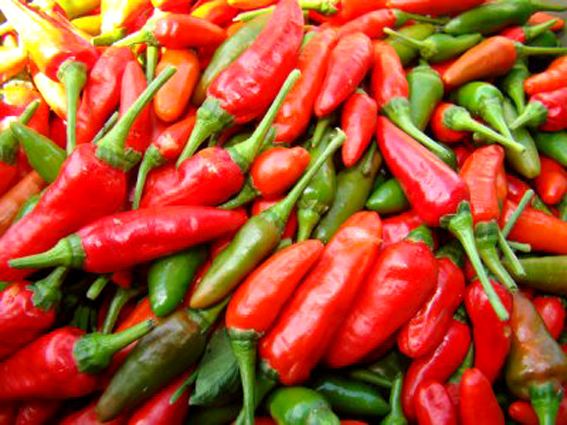
Uses in food and cooking
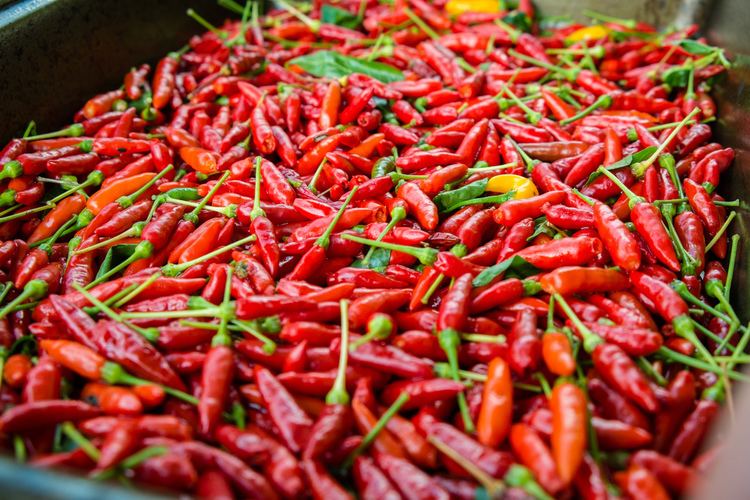
This pepper is used to season many regional dishes and sauces in Brazil and Mozambique. In Portugal, it is mainly used to season poultry dishes.
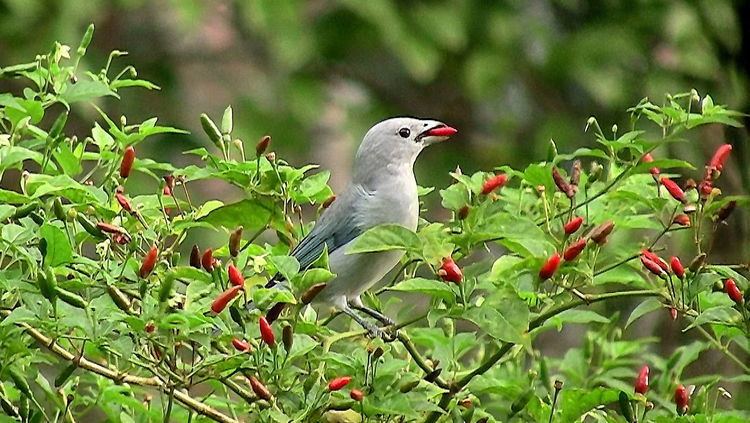
The malagueta chile (spelled "mala"), used in Brazilian cooking, is often confused with melegueta pepper (spelled "mele"), also known as "grains of paradise", a cardamom-like West African spice, Aframomum melegueta, from the Zingiberaceae (ginger) family. Botanical and culinary writers have made the error of referring to the chilli as the African spice, thinking it to be one and the same.
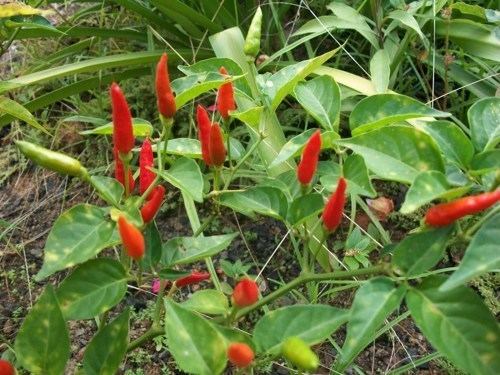
In the cuisine of São Tomé and Príncipe, piri-piri sauce made with malagueta pepper is commonly available as a condiment in restaurants throughout São Tomé and Príncipe.
In Dominican Republic, 'Malagueta' is used too for Pimenta dioica.
